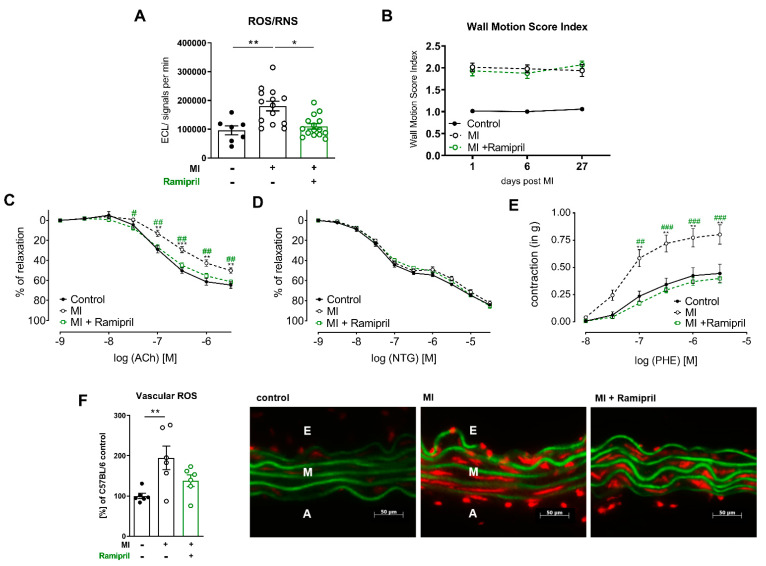Figure 3.
In ischemic heart failure, early ACE inhibitor treatment improves vascular endothelial function due to reduction of vascular and systemic ROS. (A) Superoxide formation in whole blood measured by enhanced chemiluminescence after stimulation with PDBu 28 d after MI, n = 7–15 mice per group; (B) High-frequency ultrasound echocardiography with measurement of wall motion score index (WMSI) 4 weeks post-MI, n = 13 to 14 mice per group; (C–E) Isometric tension studies of isolated aortic segments 28 d after MI. (C) Contraction-relaxation curves in response to endothelium-dependent vasodilator acetylcholine (Ach), (D) contraction-relaxation curves in response to endothelium-independent vasodilator nitroglycerin (NTG), (E) dose-dependent contraction curve in response to the α1-agonist phenylephrine (PHE); n = 4–12 rings per group; mean + SEM; 2-way ANOVA; * p < 0.05, ** p < 0.01 (Control vs. MI), # p < 0.05, ## p < 0.01, ### p < 0.001 (MI vs. MI + ramipril); (F) Oxidative fluorescence microtopography; right: per group, one representative photomicrograph is shown. Autofluorescence of laminae produces a green signal, superoxide formation yields a red fluorescent signal; A, adventitial layer; E, endothelial layer; M, medial layer; left: quantification of superoxide formation in the vessel wall measured by integrated optical density (IOD), percentage of C57BL6 sham; n = 6 per group; mean + SEM; one-way ANOVA. p < 0.05, ** p < 0.01, *** p < 0.001.

